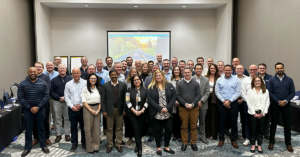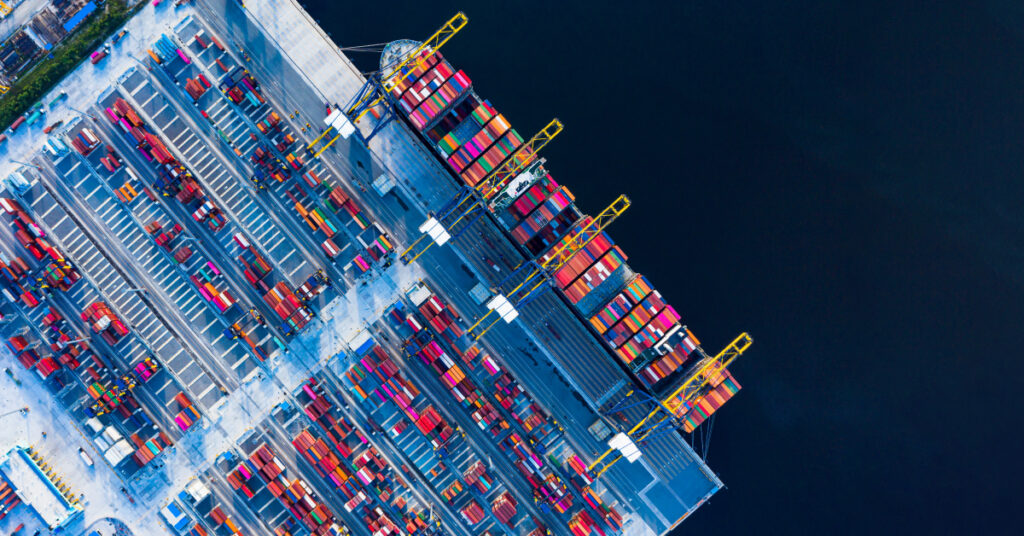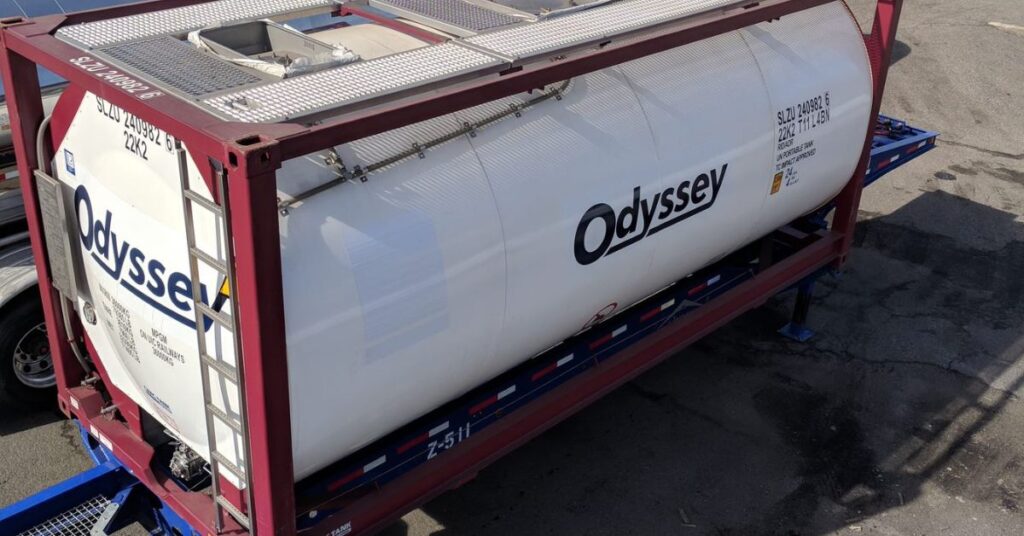By Maneet Singh, Chief Information Officer
As the initial hype around AI settles into a more measured understanding, the focus shifts to capturing its true opportunity.
This shift is crucial as Gartner predicts that by 2025, AI will be a workforce partner for 90% of companies globally. Such rapid integration of AI into the workplace demands active leadership—not just to set AI ambitions but to continually revisit and refine them, and ensure AI-readiness with clear, ethical guidelines for its use.
In the logistics industry, we know very well that the keys to success often lie in speed and adaptability. Technological advancements over the last decade have dramatically transformed how we work, yet we are only beginning to tap into the possibilities. As we move into the future, I’ve often pondered what is more important: great strategy or flawless execution? My view is that it’s not about choosing one over the other; it’s about laying a solid foundation for success and continuously learning and adapting.
To this end, Odyssey has adopted a five-part roadmap for AI-readiness and technological resilience designed to develop proactive strategies for company-wide tech stewardship. To make this strategy work, we’re focused in the following areas, all equally important:
- Risk reduction
- Mitigating tech debt
- Improving productivity
- Streamlining the customer experience
- Unified data governance
This plan is more than a bunch of platitudes; it’s a detailed strategy for protecting Odyssey’s core business functions and fully seizing the value of new opportunities.
As a multimodal logistics provider, we are in a unique position to learn from the market and respond with real solutions. This year, in our 2024 Transportation Management Outlook Study conducted with Peerless Research Group, we included questions about AI. The rich insights that we gathered cover a range from cybersecurity to efficient shipping practices, addressing the generational shifts to building resilience through sourcing and technology.
These results come as AI triggers new concerns among the population more generally; over the past five years, trust in AI has dropped in the United States from 50% to 35%. It’s natural to ask: How will the logistics industry leverage new innovations responsibly and with the correct amount of human oversight? What measures does Odyssey have in place to ensure a resilient position in the face of rapidly shifting technological norms?
Here’s the answer: A purpose-built plan for mitigating risk, maximizing productivity, and delivering superior experiences to Odyssey customers. Read on for more details on our five-part roadmap.
RISK REDUCTION
Reducing risk begins with visibility. We often speak of the boundless potential of AI, but don’t talk about AI-ready security or the risks involved when it comes to AI.
With the average cost of a data breach in the transportation industry at $3.6 million, cyberthreats in our industry bring unique risks because they can have damaging ripple effects on global supply chains. As a CIO, it’s critical to understand and prepare for new attack vectors made possible by AI, and create an acceptable use policy for public generative AI solutions.
Over the past year, on our journey to One Odyssey, we have been laser-focused on integrating our legacy businesses’ tech stacks, building a best-in-class cybersecurity tech stack of our own, and creating a culture of security awareness across our 2,000+ employees globally.
MITIGATING TECH DEBT
“Technical debt” refers to the overlapping accumulation of stop-gap solutions and outdated systems that weigh tech stacks down and create vulnerabilities for bad actors to exploit. It can be particularly problematic in industries like transportation and logistics, where frequent M&A, shifts in market demands, and the rapid pace and complexity of our work never remains static.
Even seemingly advanced IT systems that make use of modern tools and the cloud can suffer from tech debt that exacts its toll behind the scenes. According to a 2022 report, tech debt costs the United States $2.41 trillion per year in operational failures, failed development projects, and maintenance of outdated systems.
IT leaders have a responsibility to simplify operations to increase efficiency. For Odyssey, this involves aligning organizational structures with strategic goals and promoting agility. We’re also focused on upskilling our teams, launching an AI strategic task force, and adopting agile practices to quickly respond to market changes and the innate volatility of global supply chains. These proactive strategies are designed to not only better support Odyssey’s customers and partners, but also empower us to maintain a competitive edge as a unified company—as One Odyssey—by delivering tech-driven results that aren’t burdened by outdated, clunky internal systems.
IMPROVING PRODUCTIVITY
Disconnected systems can cause more problems than just security risks—they also slow down work. For logistics partners to be adaptable and remain competitive, it’s imperative to place a premium on technology solutions that make it easier for teams to collaborate and be productive.
For Odyssey, being “One Team with One Goal” is what drives us to invest in initiatives that rationalize and streamline our internal processes. We are implementing solutions that not only improve team productivity but also reduce operational costs and have a positive impact on EBITDA.
Productivity isn’t just about output; it reflects on our capacity to support customers effectively, adapt to change, and pursue growth.
STREAMLINING CUSTOMER EXPERIENCE
Customers are at the core of what we do—they deserve the highest level of service, and we must continually rise to the occasion with adaptive, tech-enabled strategies for meeting their needs.
As One Odyssey, we are better equipped to deliver on this important goal. By leveraging AI-powered technologies and the right tools, it’s our mission to create a unified customer experience that reflects our commitment to service excellence and innovation. This means enhancing individual interactions with the ultimate aim of securing better outcomes by, for example, connecting customers with tools and services they may not have been aware of.
Improving CX is the ultimate win-win. By facilitating customer experiences that are seamless, convenient, and highly valuable, Odyssey aims to establish ourselves as the natural choice in helping our customers solve a range of logistics challenges. Perhaps more importantly, these experiences make up the foundation of loyal, sustained customer relationships––the beating heart of our business.
UNIFIED DATA GOVERNANCE
Lastly, and perhaps most essential to the foundation of these strategies is the ability to quickly interpret and act on data insights. This has become increasingly critical in our industry. At Odyssey, we’re halfway through our one year effort to consolidate data sources across the company to create a unified data narrative that will equip us to better predict trends, manage risks, and seize opportunities in real-time.
By integrating advanced data analytics tools and AI, Odyssey can more effectively roll out market-leading solutions for our customers, optimize our operations, and respond to global economic shifts. This focus on leveraging data to make decisions not only sharpens our competitive edge in our highly complex industry but also ensures that as we grow, we can remain agile in how we serve our customers.
STRONGER AS ONE ODYSSEY
As One Odyssey, our focus on AI and technology is always balanced with practical, real-world applications. This balance helps us navigate the future confidently and ethically.
Interested in more insights? Stay tuned for our AI Meets Critical Intelligence eBook launching this month or talk to an expert.








